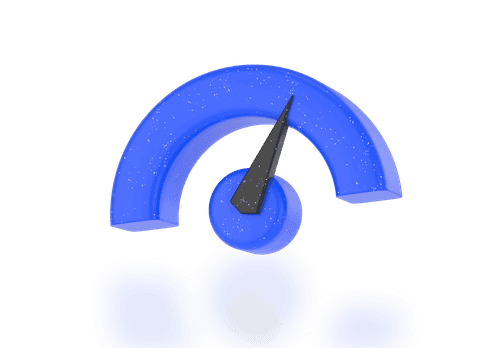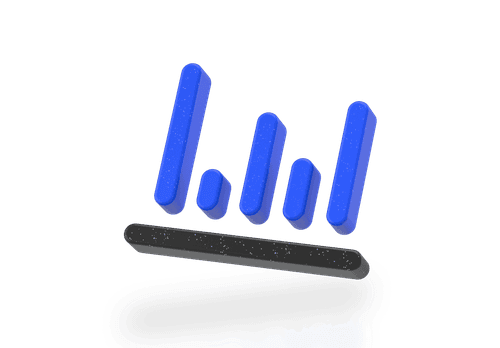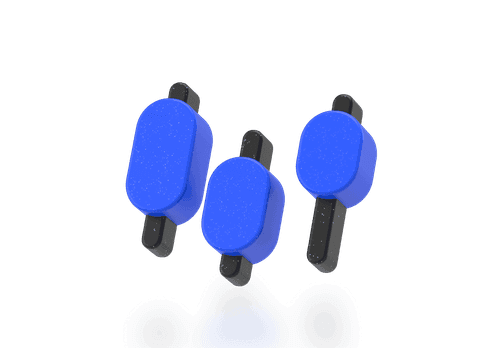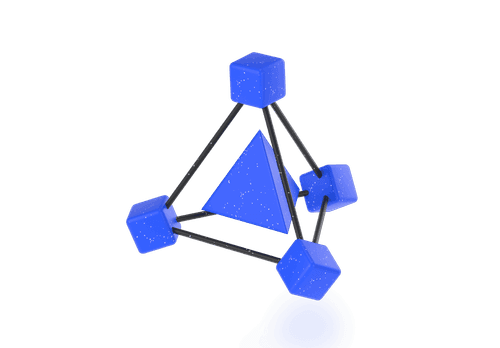Advanced
Mastering Technical Analysis for Profitable Trading

The art of profitable trading often hinges on the ability to decode market trends and make informed decisions. At the heart of this quest lies the mastery of technical analysis – a critical tool for any trader aiming to navigate the intricate pathways of market movements with precision and confidence.
This article delves into the depths of technical analysis, unraveling its complexities and revealing how it can be a powerful ally in the pursuit of trading success. We will explore its foundational principles, from understanding chart patterns and indicators to interpreting volume and price movements. Additionally, this article aims to demystify the often-perceived notion that technical analysis is just a web of confusing charts and numbers by providing practical strategies and real-world examples that bring theory to life.
What is Technical Analysis?
Technical analysis is a methodology employed to forecast the likely future price trajectory of securities, such as stocks or currency pairs, by analyzing market data. This approach is rooted in the belief that market participants' collective behavior – their buying and selling actions – effectively integrates all pertinent information about a security, thereby consistently establishing its fair market value.
The cornerstone of technical analysis is the conviction that the market's current or historical price behavior is a dependable predictor of its future price movements. This principle is widely accepted not just among technical traders but also by many fundamental traders. While fundamental traders typically use fundamental analysis to decide whether to enter a market, they often turn to technical analysis to identify optimal, low-risk entry points for buying.
Analyzing charts across various time frames
Technical traders rely on price charts to forecast future price movements. The key elements in this analysis are the chosen time frames and specific technical indicators. These time frames can vary widely, ranging from one-minute to monthly or even yearly spans. Among the most commonly used time frames are:
- 5-minute charts
- 15-minute charts
- Hourly charts
- 4-hour charts
- Daily charts
The selection of a time frame depends greatly on an individual trader's style. Intra-day traders, who open and close positions within a single day, prefer shorter time frames like 5-minute or 15-minute charts. Conversely, long-term traders, who maintain positions overnight or for extended periods, are more likely to use hourly, 4-hour, daily, or weekly charts.
For example, price movements within a 15-minute period might be crucial for an intra-day trader seeking profits from day-to-day price volatility. However, these same movements might be less significant or indicative for a long-term trader when viewed on a daily or weekly chart.
A practical example can illustrate this point: consider the price of silver on a daily chart, oscillating between approximately $16 and $18.50 over several months. A long-term investor might view this as an opportunity to buy, noting that the price is near the lower end of this range. However, without the inclusion of specific chart visuals, this example serves to underscore how different time frames can influence a trader's perspective and decision-making in the market.
Understanding candlestick
Candlestick charting is a prevalent method used in technical analysis to represent price movements on a chart. Each candlestick on a chart, regardless of the time frame, encapsulates the price fluctuations within a specific period. For instance, on an hourly chart, each candlestick represents one hour's worth of price data, while on a 4-hour chart, it represents four hours.
Candlesticks are constructed based on the highest and lowest trading prices during the given time period. The highest point of the candlestick denotes the highest traded price, while its lowest point indicates the lowest price. The main part of the candlestick, often depicted in colors such as red or blue, is called the "body" and represents the opening and closing prices of the security. If the body is blue, it signifies that the closing price was higher than the opening price, and a red body indicates the opposite.
The choice of colors for candlestick bodies varies among traders, with some preferring the traditional white and black, while others might opt for green and red, or blue and yellow. These colors provide a quick visual cue as to whether the price closed higher or lower than it opened. Many analysts find candlestick charts more informative and easier to read than standard bar charts due to the additional visual cues and patterns they offer.
Candlestick patterns and market analysis
Candlestick patterns, formed by one or several candlesticks, are crucial technical indicators for predicting potential market reversals or changes in trend.
Doji candlesticks, characterized by their identical opening and closing prices, are a classic example. These candlesticks, with a flat-lined body, indicate market indecision, potentially signaling an impending trend change. The longer the upper and/or lower shadows of a doji candlestick, the stronger the suggestion of market uncertainty and the likelihood of a reversal.
There are various types of doji candlesticks, each with distinct characteristics. For example, the long-legged doji, with prices extending roughly equally in both directions, signals market indecision. This pattern, when following a prolonged trend, is often interpreted as an indicator of a possible market reversal.
The dragonfly doji, appearing after a significant downtrend, suggests a potential upward reversal. This is inferred from the price action where the sellers initially push the price down significantly, but it recovers to close at its highest point. Conversely, the gravestone doji, the antithesis of the dragonfly, signals a strong rejection of upward price movements and hints at a potential downward reversal.
The extremely rare four-price doji, representing a market with identical open, close, high, and low prices, epitomizes indecision, indicating a market without a clear direction.
Entry and exit points in candlestick trading
Candlestick patterns are not only useful for understanding market sentiment but also for identifying strategic entry and exit points in trading. Traders often use these patterns to determine the optimal moments to enter or exit a trade, maximizing profitability and minimizing risk.
Technical analysis patterns
Technical analysis encompasses a wide range of patterns beyond candlesticks, each offering insights into market trends and potential price movements. Familiarity with these patterns, alongside candlestick analysis, forms a comprehensive toolkit for traders to interpret market dynamics effectively.
For a more in-depth understanding and historical data on the reliability of these patterns, resources like Thomas Bulkowski’s pattern site can be invaluable. This site offers detailed explanations of each pattern and statistical data on their historical accuracy, which is crucial for traders seeking to base their decisions on proven strategies.
Technical Indicators in Trading
In the realm of technical analysis, traders have access to a plethora of technical indicators that aid in making informed trading decisions. Among these, moving averages and momentum indicators, along with pivot points and Fibonacci numbers, play a pivotal role.
Moving Averages
The most commonly utilized technical indicator is the moving average, forming the backbone of numerous trading strategies. A straightforward approach might be to buy when the price stays above a 50-period exponential moving average (EMA), and sell when it remains below it.
Moving average crossovers are also significant. A typical strategy involves buying when a shorter period moving average, like the 10-period one, crosses above a longer period average, such as the 50-period average. The importance of a moving average is often directly proportional to its period; thus, a price crossing a 100- or 200-period moving average is usually deemed more significant than crossing a 5-period moving average.
Pivots and Fibonacci numbers
Daily pivot point indicators, which include several support and resistance levels in addition to the pivot point itself, are crucial for traders in identifying potential entry and exit points. These pivot levels often mark key support or resistance points, or the boundaries of trading ranges. A breakout through these levels could indicate a substantial market shift in the direction of the breakout.
Pivot points and the associated support and resistance levels are calculated using the previous day’s high, low, opening, and closing prices. Many charting platforms automatically provide these levels, alleviating the need for manual calculations.
Fibonacci retracements, derived from the work of a 12th-century mathematician, are another popular tool in technical analysis. These ratios – 23%, 38%, 62%, and 76% – are used to identify potential entry points during price retracements in a sustained trend. For example, if a stock rises from $10 to $40 and then retraces, Fibonacci levels can help pinpoint a good entry point, such as around $31 for a 38% retracement.
Fibonacci extensions
These are used for setting profit targets. Continuing with the previous example, if you buy at $31, the first Fibonacci extension level (126%) provides a potential target for taking profits, calculated from the low of the retracement. So, using the extension level, you may set a target price of $68.
Fibonacci levels are widely available on charting software, enabling traders to visualize these important levels without manual calculations.
Momentum indicators
Beyond determining market direction, momentum indicators assess the strength of market movements. Tools like the Stochastic Oscillator, Relative Strength Index (RSI), Moving Average Convergence-Divergence (MACD), and Average Directional Movement Index (ADX) fall into this category.
By measuring the intensity of price movements, momentum indicators can indicate the likelihood of whether the current price movement represents a substantial trend or just range-bound trading. These indicators are particularly useful as they can signal the potential end of a trend. For instance, if a momentum indicator shows a strong, sustained uptrend weakening, it might be a cue for traders to consider taking profits.
Conclusion
While technical analysis can significantly enhance trading profitability, its true value is realized when combined with sound risk management and an awareness of its limitations. The key to successful trading lies not only in the tools used but also in a balanced approach that considers both potential gains and the strategies to mitigate potential losses.
The most effective traders don’t just rely on these tools for success; they also dedicate significant effort to preparing for scenarios when the market moves against their predictions. This approach includes understanding the role of volume analysis, which, when combined with other technical indicators, can provide a more comprehensive view of market trends and the strength behind them.
Technical Analysis in nomo
At nomo, we offer extensive capabilities for conducting technical analysis, tailored to enhance your trading experience. Our platform is equipped with a range of key indicators that are essential for any trader's toolkit. These include popular choices like moving averages, pivot points, Fibonacci retracements, and a variety of momentum indicators, each offering unique insights into market trends and potential trade opportunities.
One of the standout features of our platform is the customizable nature of our charts. You can easily adjust timeframes to suit your trading style, whether you're an intra-day trader who prefers shorter timeframes or a long-term investor who looks at daily or weekly charts. This flexibility allows you to tailor your analysis to your specific trading strategy and preferences.
Moreover, applying technical indicators to your charts is straightforward, enhancing your ability to spot trends and make informed decisions. Our platform supports technical analysis across a vast array of over 1,000 assets, including currency pairs, indices, cryptocurrencies, stocks, and ETFs. This wide range ensures that you have access to a diverse range of markets to apply your technical analysis skills.











